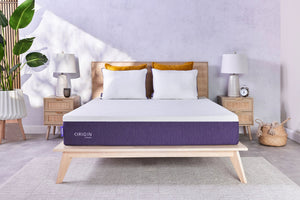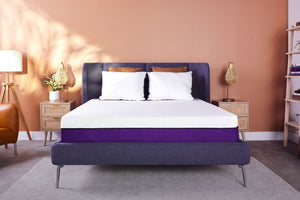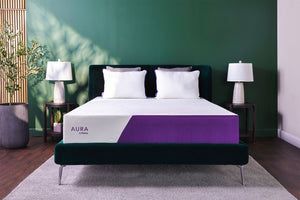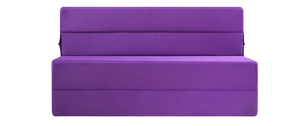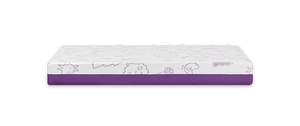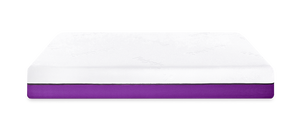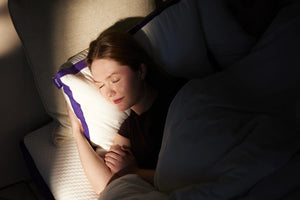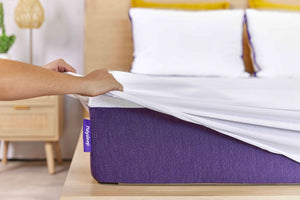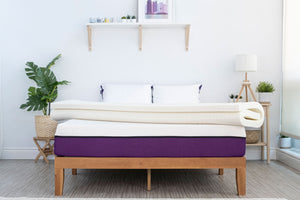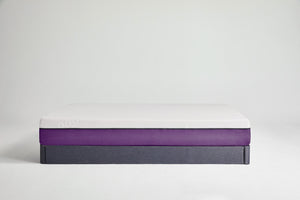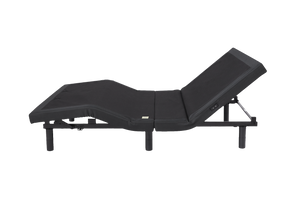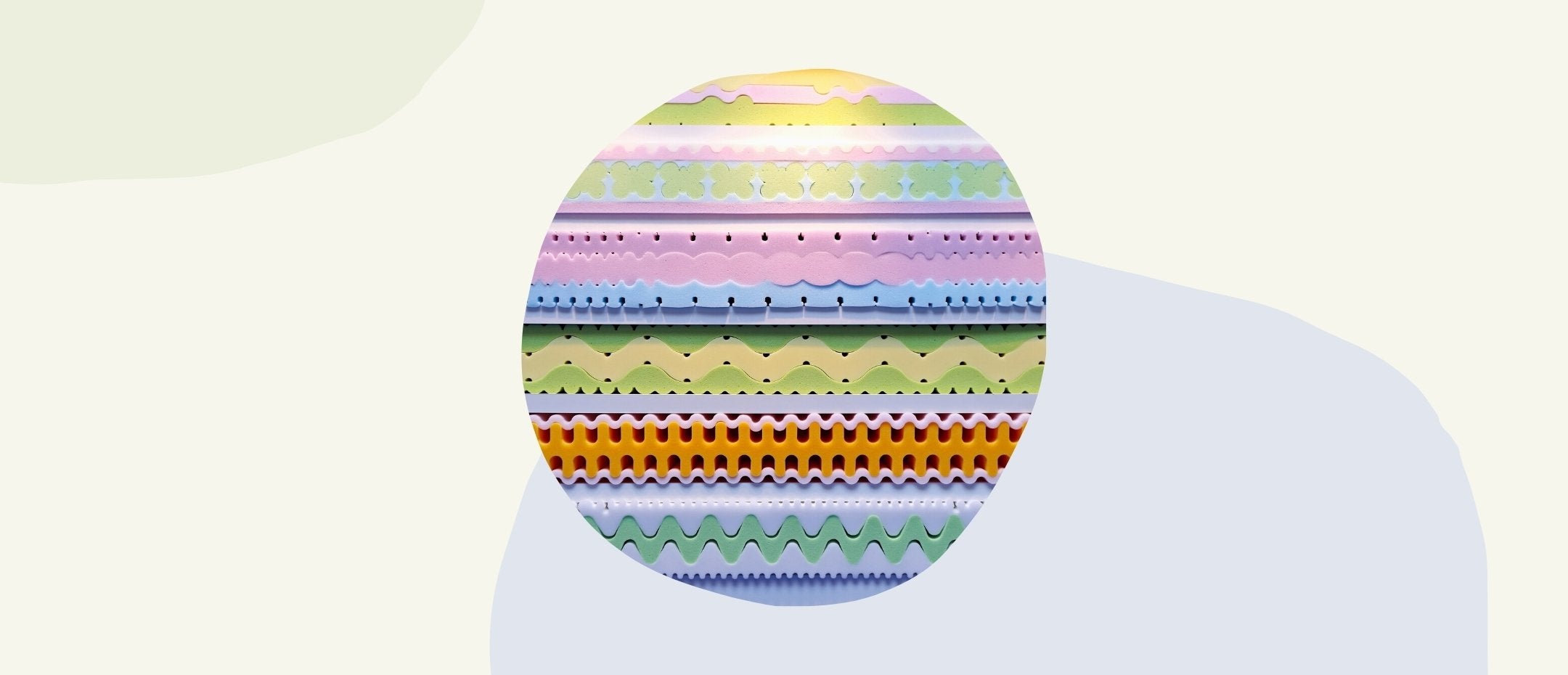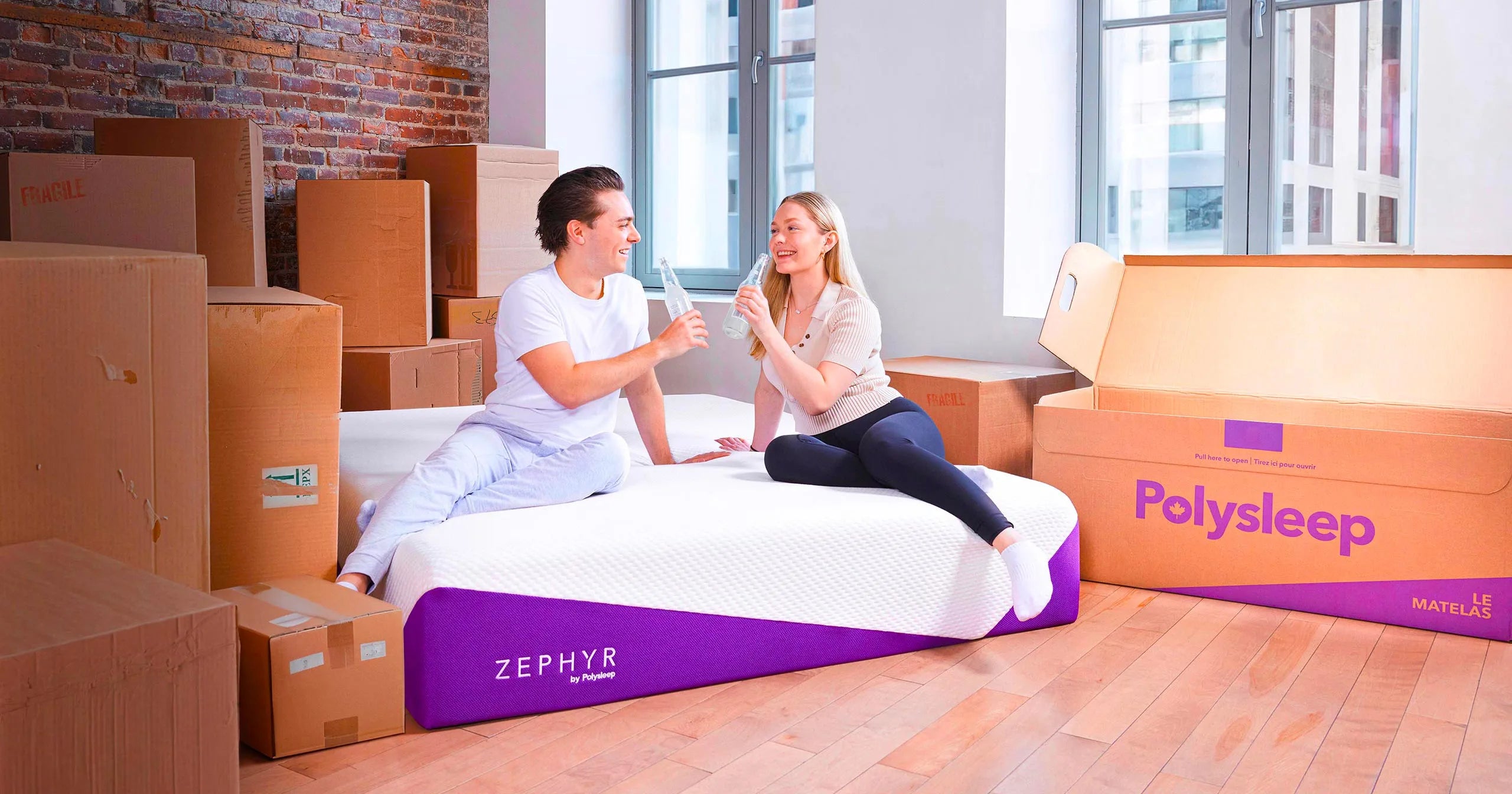When shopping around and comparing mattresses, you’ll find that there are many types of foam.
In fact, there are major differences in foam material and properties from one of these types of foam to the next.
In this article, Polysleep, foam mattress specialist, breaks down the different types of foams, their strengths and weaknesses.
Charcoal Foam
Not an ideal foam for mattresses, charcoal foam is typically used as cushioning for delicate electronic items when they ship. It also has acoustical properties, making it great for sound dampening and soundproofing. It has an open-cell structure, is lightweight, and lasts about six years.
-
Passes multiple flammability specifications.
-
Open-cell structure.
-
Medium quality at best.
-
Lacks durability.
Charcoal foam is certainly not recommended as a dominant foam for mattresses. It lacks the density and buoyancy for rigorous, daily use that is required of mattresses. However, some manufacturers incorporate it as a layer base and complement it with other foam types.
Polyurethane Foam
One of the best foams on the market if chosen wisely, polyurethane foam has many considerations you want to keep in mind.
-
Inexpensive. Perhaps the least expensive option available that is used in mattresses.
-
Effective blockers for allergens and dust mites.
-
Great barrier against liquids
-
Passes multiple flammability specifications.
-
Helps proper spinal alignment.
-
Open-cell structure.
-
Great density.
-
Different quality, different prices. If you’re going for the lower price, you will get what you pay for. Don’t be surprised.
-
Made with petrochemicals and other potentially harmful materials. It’s preferable to choose CertiPUR-US certified foam mattresses.
-
Low durability. The lowest quality can begin breaking down and losing form within two years, on average.
-
Terrible off-gassing. Due to the chemicals used to make the foam, off-gassing with these mattresses is usually extensive.
There are three standard grades of Polyfoam: lowest grade (density < 1.5 pcf), High Density (density = 1.5 to 1.7 pcf) and High Resiliency (density = 1.8 to 2.5 pcf).
Depending on the grade, the quality of the mattress may vary substantially.
At Polysleep, we recommend choosing a mattress with minimum high density Polyfoam paired with another foam type, like in our mattresses. That way, you benefit from a high-quality mattress but at an affordable price.
Memory Foam / Viscoelastic Foam
This high-quality foam conforms to your body shape offering superior pressure point relief. It is a high-quality foam that does present some considerations.
-
Excellent comfort. The nature of memory foam gives you a cloud-like sleep experience that many people find extremely comfortable.
-
Superb pressure point relief. No other foam mattress can compete with memory foam when it comes to pressure point relief.
-
Durable. Memory foam has an expected 10-year life span.
-
Holds heat close to the body. This means that traditional memory foam mattresses owners sleep hot. There are memory foams that are gel or copper-infused to help you stay cooler.
-
Sinking or quicksand feeling. One of the biggest complaints about memory foam, aside from the heat, is the lack of support that creates a sinking feeling for sleepers.
-
Costs. Most quality memory foam mattresses are costlier than other types of foam available.
-
Off-gassing. Most memory foam mattresses are made with a wide range of petrochemicals and off-gas considerably upon opening.
Memory foam is a popular option, but it's not without its drawbacks. Keep them in mind as you choose your next mattress.
Closed Cell Foam
Another type of foam but not recommended for mattresses is closed cell foam. It’s most commonly used for hot tub covers, exercise mats, and similar items. It does not absorb water, is impervious to petroleum, and it is strong. Because it floats and does not absorb water, closed-cell foam is an excellent choice for life jackets, but not so much for mattresses.
-
Superior quality foam.
-
Water-resistant.
-
Strong. When used for insulation it also adds support to the walls. Of course, this strength doesn’t make for a comfortable night’s sleep when used in a mattress.
-
High density. This makes it resistant to mold growth.
-
Not at all breathable. The closed cellular construction of the foam doesn’t allow airflow through the foam making it hot. It is great for insulation. Not for sleep.
-
Hard. Better suited for structural needs than a comfort layer in a mattress.
Open-cell structure foams are simply better for mattresses as they allow air to flow more freely through the mattress.
Reflex Foam
Many people consider reflex foam to be a more affordable alternative to memory foam. You get many similar benefits from the two foams with a much lower price point, in most cases.
-
Dust mite resistant.
-
Firmer than memory foam. Eases the sinking sensation memory foam is famous for.
-
Better spinal support than memory foam and other types of foam mattresses.
-
Greater resilience and bounce than most memory foam alternatives.
-
Lower cost than memory foam.
-
Made with polyurethane and many petrochemicals.
-
Known for off-gassing.
If you’re looking for a mattress that ranks squarely in the “medium” category when it comes to firmness, this may be the foam material that will work best for you.
Latex Foam
Made from the sap of rubber trees, latex foam is one of the most resilient and durable foams on the market today. It is also known for its superior support.
-
Outstanding support for better spinal alignment.
-
Resistant to mold, mildew, dust mites, and more.
-
Made with natural ingredients.
-
No off-gassing. Because 100 percent natural latex mattresses are made without petrochemicals, there is no chemical off-gassing when these mattresses are first opened. Some do complain, however, of a pervasive rubber smell for the first few hours.
-
Durable. Natural latex foam mattresses last up to 15 years, on average. Some last even longer before breaking down, sagging, or indentations occur.
-
Expensive. Natural latex mattresses are among the costliest foam mattresses on the market today.
-
Heavy. Frequent movers might want to skip this mattress in favor of something lighter.
Be warned that not all products claiming to be natural latex are. Many of them contain synthetic ingredients that can lead to off-gassing and release volatile organic compounds (VOCs) into the air inside your home. Look for certified organic latex products or 100 percent natural latex instead.
Lux Foam / Evlon/Evlon
Easy on the budget, lux foam is often used in high-end sofas and mattresses. It is known for buoyancy and comfort and is a high-quality foam.
-
Inexpensive.
-
Passes flammability specifications.
-
Open-cell structure.
-
Lightweight. This means that mattresses made with lux foam, or Evlon, are easier to move around.
-
Not very durable, lasting approximately six years before beginning to break down.
-
Notable off-gassing.
Lux foam is commonly used in high-end furniture and mattresses. This means that even though it is less expensive than some mattress options, it isn’t necessarily available at “rock bottom” prices, either.
Convoluted Foam / Egg Crate Foam
More commonly used for mattress toppers than mattresses themselves, egg crate or convoluted foam is widely available and inexpensive.
-
Inexpensive.
-
Aids in spinal alignment and pressure relief as a mattress topper.
-
Unique shape helps to disperse heat and distribute weight.
-
Difficult to clean and protect.
-
May exacerbate allergies.
-
Lacks support. Requires a firm mattress foundation to work effectively.
Not the best choice for a mattress by far, though egg crate foam can be used for sound insulation and makes a great comfort layer as a mattress topper.
Learn more: Our ULTIMATE Foam Mattress Guide!

Polysleep’s Hybrid Foam
The hybrid foam mattresses by Polysleep combine the best foam materials on the market: hybrid viscoelastic foam and high density/ high resilience polyurethane foam.
Here are some advantages of choosing our new generation of hybrid foam mattresses:
-
Various foams densities for the best support and comfort.
-
Medium firmness.
-
Built-in foam support frame that delivers edge-to-edge support.
-
Help with excellent spinal alignment while you sleep.
-
Maximal ventilation and breathability properties that regulate your body temperature.
-
Reasonable price for a high-quality mattress.
-
Foams certified CertiPUR-US.
This powerful combination of breathability, comfort, and support is what sets the Polysleep hybrid foam mattress apart from so many others on the market today.
Our commitment is to offer the perfect night’s sleep with the best materials possible. This is why our foams are certified by the CertiPUR-US programs, which guarantee the non-use of ozone depleting chemicals and the respect of the Consumer Product Safety Commission Low VOC (Volatile Organic Compound) emission for indoor air quality.
With a 100-night risk-free trial, you have everything to gain by trying our unique sleep experience for yourself.

If you liked our blog article, please don't forget to Share it with your friends by clicking the button below!



